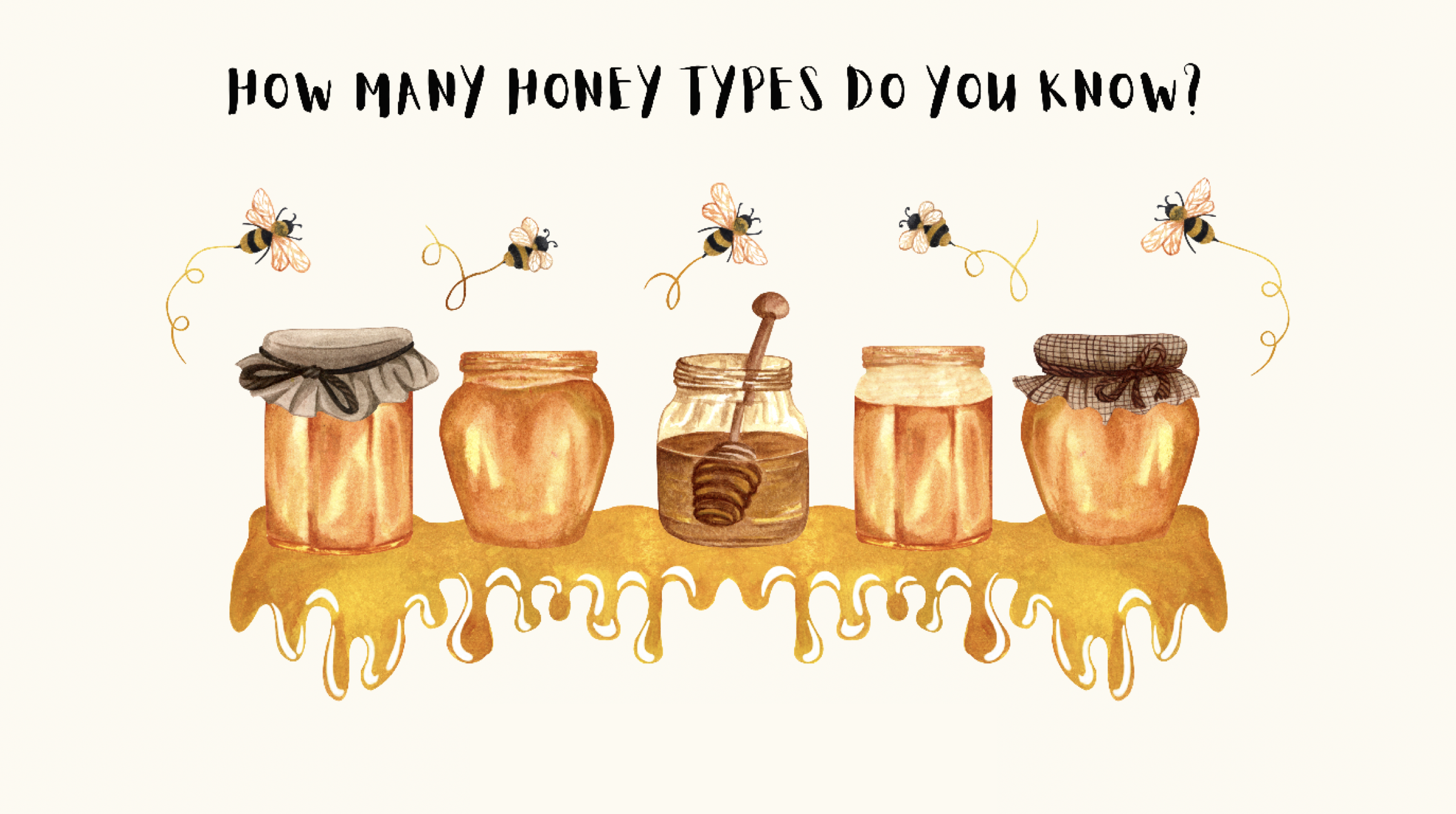How many honey types do you know?
How many honeys are out there? Hundreds, thousands, even millions. It just depends on how specific you want to be.
At the very least, there are as many varieties of honey as there are varieties of flowering plants that bees pollinate. A beekeeper can set up their hive in a field with only one kind of flower blooming and the resulting honey will have a unique flavour because of that flower’s nectar. There are dozens of these monofloral honeys out there: clover, avocado, blueberry, sunflower, citrus, and many more around the world.
However, there are also honeys made from a variety of plants. The bees travel as far as two miles from the hive in search of nectar. As seasons change, new flowers appear, and the hive’s honey changes too. In each of these polyfloral honeys, there might be dozens of different nectars, so the number of possible combinations is at least in the thousands. Local honeys tend to be polyfloral, with a variety of pollen sources from a certain region. These give the honey a unique flavour profile that reflects a unique combination of season, weather, geography, and local plant life.

Flavours and colours of Australian honey
Australian honey is highly sought after in global markets for its unique tastes and formidable reputation for being produced cleanly and sustainably.
All around Australia honeybees visit more than 700 native flowering plants to collect nectar and pollen to produce honey. The flowers the honeybees visit give honey its flavour and colour.
Australia boasts more floral sources for honeybees to forage on than any other country in the world, making our honey the most unique in the world with its wide-ranging tastes and colours. Some of the best loved Australian honey flavours come from:
- Blue gum – light amber, choice forest honey from the south.
- Karri – amber honey from the forests of Western Australia.
- Leatherwood – unique honey from Tasmania’s west coast, quick to candy and extra light in colour.
- Lucerne – mild-tasting honey.
- Yellow box – pale and sweet honey from New South Wales, Victoria, and Queensland.
- Stringy bark – strong flavoured, medium amber honey from the Great Dividing Range.
- Tea Tree – strong flavoured honey used in manufacturing, from the north and south.
- White clover – extra white honey that candies smoothly.

Honeybees have an excellent sense of smell to distinguish between the different perfumes of the flowers and also have a ‘perfume dispenser’ to tell other bees the types of flowers that have been chosen. If the honeybee visits a mixed patch of flowers, a special perfume left by the scout bee tells the workers to take the nectar from only one source so that honey in the hive is but one honey type. The bee can also distinguish colours in the blue and green end of the spectrum – and has a time sense, too.
Next time you are at your grocery store, supermarket or health food shop look along the shelves to see the wide range of honey available to purchase. Generally, the larger the store, the more types there will be to choose from including blends of golden liquid honey ranging from pale yellow to deep rich amber, jellied, creamed, or candied honey. You may even be able to buy honey in the comb — a favourite ‘sweet’ for many as it has a good chewy quality. It’s tasty and it’s fun, and you can eat the wax, too.
Buy 100% Australian honey
When you choose to purchase honey, make sure you check the label carefully to ensure the contents are 100% Australian honey. You will be supporting Australian beekeepers and the many horticultural and agricultural industries that rely on honeybees for pollination services. Never settle for honey that is just “honey.” Find out where it is from, look into how it’s made, and make sure it’s always raw & unfiltered.



